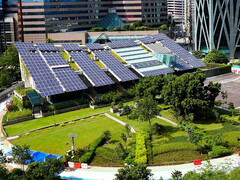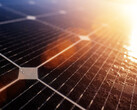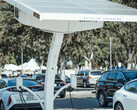Hydrogen is seen as an important building block for transforming particularly emission-intensive industries into CO2-neutral ones. Shipping, aviation and the steel industry can be powered by this fuel, which is also used for rockets for good reason, using renewable energy in a roundabout way.
Hydrogen is comparatively easy to produce using electricity. It can be stored either in liquefied form or chemically bound to nitrogen (ammonia) or carbon (clean methane).
However, if electricity from coal and natural gas is used and energy is not obtained exclusively from excess capacity, hydrogen production becomes a problem.
What would be the solution? First of all, reorganize energy production over a period of years and create overcapacities that could not be utilized at first? Then spend several years building up hydrogen production until it works on a large scale? Not only is there not enough time for this, it is also impractical, uneconomical and anything but realistic.
This is also the conclusion of a comprehensive study at MIT, which outlines a feasible way to produce clean hydrogen on an industrial scale.
More pragmatism, please
So instead of looking at the actual amount of electricity generated from renewable energies in an electricity grid, it is recommended to look at the annual feed-ins.
This means that the green hydrogen may have been produced exclusively with coal-fired electricity for the exact time it was generated. Nevertheless, the hydrogen should have been produced from the excess capacity of wind and solar parks determined over a longer period of time, at least on paper.
In this way, it remains CO2-neutral and can be taxed or subsidized accordingly.
The approach to overcapacity is very similar. Here too, with the current electricity grids, the technology used (especially the lack of intelligence in the grids) and the collection of the required data, it seems unrealistic to be able to start producing hydrogen in the event of overcapacity and to stop again before an imminent overload or the connection of a gas-fired power plant.
Overproduction from renewable energy is allowed to be recorded after the end of the year, thus enabling the production of green hydrogen. Such figures can also be estimated at the beginning of the year.
In this way, small plants and entire industrial complexes are to be created that produce the fuel in a climate-neutral way and without increased energy requirements - at least on paper.
A roadmap, please
It is precisely this approach that should make it possible to get started. However, it should have an exactly defined expiry date so that the industry can adapt to it.
It is precisely how the conversion of the electricity grids to flexible, intelligent and decentralized networks could succeed at the same time.
Right then, the inevitable overcapacities that will eventually arise can be stored - like in a pumped storage plant, only as hydrogen - and released again later.
Tim Schittekatte, one of the authors of the study, gives a example that summarizes the problem: A roof full of solar cells to charge your own electric car. Theoretically, the amount of electricity is sufficient, but the car is usually not parked there during the day. So the electricity generated is used elsewhere. In the evening, electricity from other sources flows into the batteries. The larger and more flexible the power grid becomes, the better such discrepancies can be balanced out. All it takes is a little time and a jump-start.













